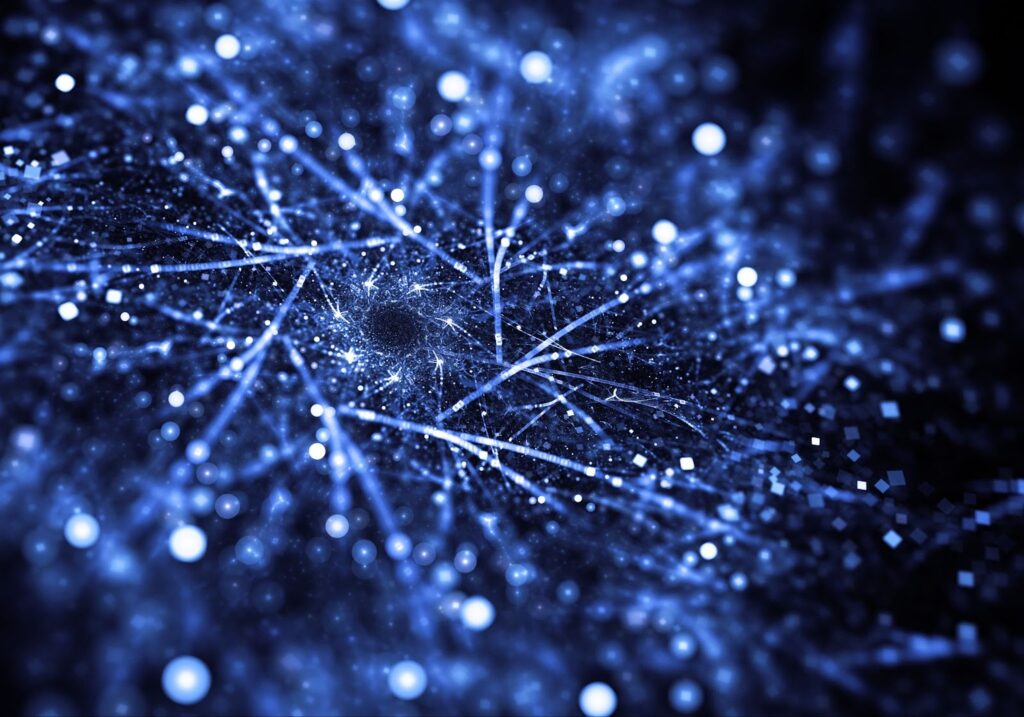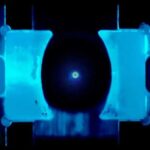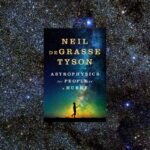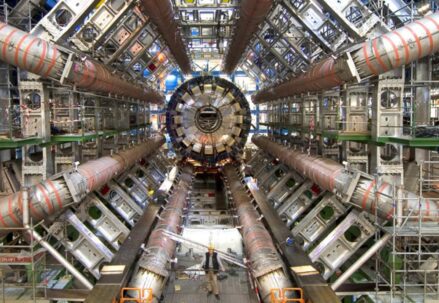The Quantum Leap Theory stands as a captivating idea that has entranced the minds of scientists, philosophers, and aficionados of science fiction for many generations. It presents an extraordinary viewpoint on the intrinsic essence of reality and the potential for instantaneous transformation. Within the confines of this composition, we shall embark on a profound exploration of the Quantum Leap Theory, delving into its fundamental tenets and the profound ramifications it bears for our comprehension of the cosmos.
Dissecting the Intricacies of the Quantum Leap Theory
The Quantum Leap Theory, often referred to as Quantum Jumping or Quantum Tunneling, is an intriguing concept nestled deep within the world of quantum mechanics. It’s a theory that uncovers the mysterious behavior of particles at the quantum level, one that allows them to move from one state to another instantaneously.
This miraculous transition is achieved without traversing through any in-between states, a puzzling behavior that throws the principles of classical physics into question and upends traditional notions of cause and effect.
A Brief Overview of Quantum Mechanics
Quantum Mechanics is a branch of physics that investigates how the tiniest particles in the universe, such as atoms and photons, interact. It’s a complex field that aims to explain the bizarre and often counter-intuitive behavior of these subatomic particles.
Quantum Leap Theory and its Key Concepts
Quantum Leap Theory revolves around these fundamental concepts:
- State Transitions: At a quantum level, particles can switch from one state to another without any intermediate state. This “leap” is instant and doesn’t involve a gradual shift, as is the case with classical physics behavior;
- Quantum Tunneling: Sometimes referred to as Quantum Jumping, this concept allows particles to move through barriers that, according to classical physics principles, should be unpassable;
- Challenging Cause and Effect: The ability of quantum particles to perform these remarkable feats of sudden state changes, and to overcome barriers, raises questions about traditional cause and effect principles. In the quantum realm, the cause doesn’t always have to precede the effect.
Why Quantum Leap Theory Matters?
Despite its complexity, the Quantum Leap Theory significantly contributes to our understanding of the universe. It informs the development of technologies that underpin our daily lives, such as lasers and semiconductors.
Moreover, exploring these quantum behaviors deepens our comprehension of the natural world and opens doors to new scientific and technological advancements.
Bear in mind, understanding quantum theories, including the Quantum Leap Theory, requires a departure from the human-scale intuition that guides our understanding of the physical world. It demands a foray into a realm where traditional laws of physics take on new, often surprising, forms.
Understanding the Quantum Leap Theory: A Journey into Quantum Mechanics
Deeply embedded within the incomprehensible world of quantum mechanics is a concept that has been boggling the minds of physicists for decades – The Quantum Leap Theory. Known by multiple names, including Quantum Jumping and Quantum Tunneling, this theory is the cornerstone of quantum physics and lies at the heart of our understanding of the subatomic world.
The Quantum Leap Theory unveils a peculiar behavior of quantum particles where they can instantaneously shift from one state to another without transitioning through any intermediate states. This sudden, blink-and-you-miss-it transition is not only fascinating but also defies our usual understanding of cause and effect as established by classical physics.
Key Aspects of Quantum Leap Theory
- State Transitions: The Quantum Leap Theory, at its core, revolves around the mesmerizing capability of particles at the quantum level to make spontaneous state transitions. Contrary to the gradual state changes we observe in our macroscopic world, these quantum state jumps are instantaneous and do not involve any intermediate states;
- Quantum Tunneling: An incredible phenomenon that stands in total defiance of classical physics principles is Quantum Tunneling. Subatomic particles, like electrons, demonstrate a peculiar ability to surmount barriers that should technically be impervious to them;
- Interrogating Cause and Effect: The elementary principle of cause preceding effect is contradicted in the quantum realm. Quantum Leap Theory shakes the very foundation of this principle, creating ripples in our traditional understanding of cause and effect.
Decoding Core Principles: Quantum Superposition in the Quantum Leap Theory
A core tenet of quantum mechanics is the principle of Quantum Superposition. This principle is central to the functioning of the Quantum Leap Theory.
- Quantum Superposition: One of the most intriguing phenomena in the arena of quantum physics is the superposition of quantum states. Quantum particles don’t confine themselves to one state at a time. Instead, they hold the potential to exist in several states at once. When applied to Quantum Leap Theory, superposition allows for a particle to exist in two distinct energy states at once, thereby enabling a quantum leap – a spontaneous and instantaneous transition from one state to another.
The exploration and understanding of the Quantum Leap Theory offer profound insights into the baffling world of subatomic particles. While it’s a complex journey that requires breaking away from some ingrained notions of physics, the path promises to paint a fresh perspective of the universe we inhabit.
Fundamental Concepts: Quantum Superposition, Probability Waves, and Tunneling
Expanding upon the core principles of quantum mechanics, we present two intriguing concepts that are crucial to understanding the Quantum Leap Theory: Quantum Superposition and Probability Waves.
Embracing Multiple Realities: Quantum Superposition
The concept of Quantum Superposition is one of the fascinating aspects of quantum mechanics. Here, particles don’t restrict themselves to a single state; they exist in a multitude of states at the same time. When this concept is applied to quantum jumps, a particle can simultaneously exist in two different energy states, making it possible for an instantaneous jump from one state to another.
Riding the Probability Waves: A Catalyst for Quantum Leaps
A critical principle that emerges from quantum mechanics is that of Probability Waves. These waves serve as the vehicle to determine the likelihood of a particle’s existence in a specific state at a particular moment. In the context of quantum leaps, a particle leverages these probability waves to transition to its new state. It’s as if they “surf” these waves to reach their desired destination.
Overcoming Barriers with Quantum Tunneling
Another peculiar aspect of the Quantum Leap Theory lies in the concept of Quantum Tunneling. This unusual phenomenon allows particles to traverse energy barriers typically considered insurmountable based on the principles of classical physics.
For instance, consider a ball that you wish to throw over a high wall. In the classical world, if you can’t throw it high enough, the ball cannot make it over the wall. However, Quantum Tunneling defies this logic. In the quantum world, the ball (particle) can miraculously appear on the other side of the wall (energy barrier), despite not having enough energy to surmount it.
This remarkable attribute of quantum particles has significant practical implications, particularly in the realm of technology. It is the pivotal principle behind the operation of tunnel diodes used in electronics.
In a nutshell, the Quantum Leap Theory, with its incredible concepts like Quantum Superposition, Probability Waves, and Quantum Tunneling, takes us on an enthralling journey into the fascinating and puzzling world of quantum mechanics.
Unveiling the Impact: Quantum Leap Theory and its Repercussions
Abandoning Gradual Transition: Instantaneous Change
One of the significant implications of the Quantum Leap Theory is the concept of instantaneous change. In stark contrast to the gradual transitions expected in classical physics, quantum mechanics brings forward the idea that particles can switch state without any time lapse. This instantaneous transition is a direct challenge to classical physics’ concept of continuity, creating ripples in our perception of time and causality.
This revolutionary idea doesn’t just apply to particles themselves, but it extends to their properties as well. From spin and momentum to position and energy, particles can change these intrinsic properties immediately without any intervening stages. Also, delve into the cosmic clash: Unveiling the epic showdown – String Theory vs. Loop Quantum Gravity. Explore the universe’s mysteries!
Reevaluating Time and Causality
The Quantum Leap Theory compels us to reevaluate our understanding of time and causality. In our macroscopic world, the cause-effect relationship is a logical sequence where the cause always precedes the effect. However, the instantaneous state changes in quantum mechanics shake this belief.
In the quantum realm, particles do not require time to transition from one state to another, morphing our understanding of time’s role in physical processes. Furthermore, the cause-effect relationship can appear to be reversed at times, with the effect preceding the identifiable cause, disrupting our traditional understanding of causality.
Real-World Applications: The Power of Quantum Mechanics
The bizarre world of quantum leaps isn’t confined to scientific theories. It has practical applications in our everyday lives. Quantum mechanics and its principles underpin numerous technologies that we rely upon daily:

- Semiconductor Devices: Quantum mechanics is the driving force behind semiconductor devices. From smartphones and computers to gaming consoles and digital cameras, these devices owe their existence to quantum principles;
- Laser Technology: Lasers, which have a wide range of applications, from medical procedures to high-speed data communication, are a gift from quantum mechanics;
- Quantum Computing: Quantum leaps are central to the development of quantum computing, a technology that promises to revolutionize problem-solving and data processing.
The Quantum Leap Theory, while complex, is not just about challenging traditional physics and provoking thought. It’s also about harnessing its principles to create, innovate, and improve our lives. It’s a testament to the fact that even the most abstract scientific theories can have far-reaching practical implications.
Quantum Leap Theory: Unveiling the Future of Computing and Interconnected Particles
Quantum Computing: Harnessing the Power of Superposition and Entanglement
The principles at the heart of the Quantum Leap Theory, most notably quantum superposition and entanglement, are key to the operation and potential of quantum computing.
Quantum computers, unlike their classical counterparts, make use of qubits which can exist in multiple states at once due to superposition, giving them the ability to hold and process a vast amount of information simultaneously.
Moreover, the concept of entanglement, another theory closely wedded to the Quantum Leap Theory, allows these computers to operate at a level of complexity and speed that are leagues beyond what conventional computers can achieve. By creating pairs of qubits that instantly affect each other, irrespective of distance, quantum computers can solve intricate problems at a pace that remains a dream in the realm of classical computing.
Deciphering Quantum Entanglement: A Spooky Action at a Distance
Intermingled with Quantum Leap Theory is the concept of Quantum Entanglement, a phenomenon that Einstein famously referred to as “spooky action at a distance.” This term has been used to describe the mind-boggling propensity for particles to become intertwined to the extent that the state of one particle instantly impacts the state of the other, no matter how far apart they may be.
Once entangled, these particle pairs exist in a delicate state where the measurement of one particle’s property, such as position, momentum or spin, directly influences the same property of its entangled pair.
Implications of Quantum Entanglement extend beyond just theoretical interest. It has significant potential in the emerging world of quantum technology, from quantum computing and cryptography to quantum teleportation and high-precision sensors.
The Quantum Leap Theory and its associated principles continue to astound and amaze us, not just for their theoretical implications, but for their potential to revolutionize the world of technology with quantum computing and other applications. Indeed, the Quantum Leap Theory is not just a leap in our understanding of the fundamental nature of the universe, but also a leap into a future infused with quantum potential.
Conclusion
The Quantum Leap Theory disrupts our conventional comprehension of reality, unearthing the enigmatic and paradoxical conduct of subatomic particles. Despite its appearance as a notion confined to the realms of science fiction, it carries significant repercussions for both technology and our foundational grasp of the cosmos. As researchers persist in delving into the enigmas of quantum mechanics, the Quantum Leap Theory endures as a mesmerizing and mystifying subject warranting deeper exploration.





